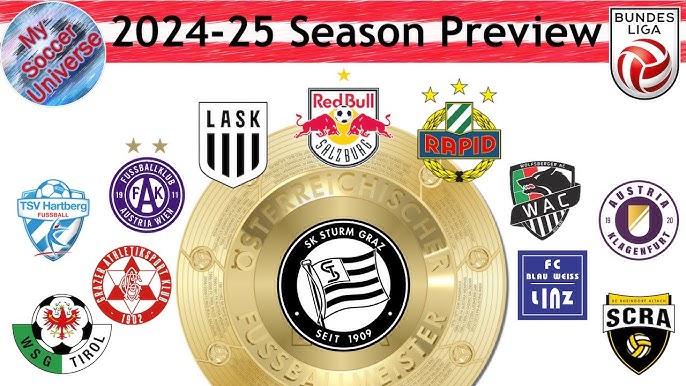The Austria Bundesliga is the premier football league in Austria, capturing the attention of football enthusiasts both locally and internationally. Known for its competitive nature and rich history, the league features some of the best clubs in the country, showcasing remarkable talent and thrilling matches that keep fans on the edge of their seats. As we delve into the intricacies of the Austria Bundesliga, we will explore its structure, teams, historical significance, and its evolving landscape in modern okvip football.
History of the Austria Bundesliga
The history of the Austria Bundesliga is a tapestry woven with passion, rivalry, and unforgettable moments that have defined the game in Austria. From its inception to its current status, the league reflects the development of football in the nation and the ever-changing dynamics of the sport.
Formation and Evolution
The Austria Bundesliga was established in 1974, following the merger of two existing leagues: the Staatsliga and the Regionalliga. This was a pivotal moment in Austrian football as it aimed to create a more competitive environment for clubs while enhancing the quality of the game.
In its early years, the league faced challenges, including fluctuating standards and the need to attract more spectators. However, over time, it began to mature, establishing itself as a fertile ground for nurturing homegrown talent. The introduction of professional management helped streamline operations and created a more stable platform for clubs to thrive.
As football evolved globally, so did the Austria Bundesliga. With increased investment from sponsors and television rights deals, clubs began to strengthen their rosters by attracting talented players from various backgrounds. This influx of diverse talent not only raised the quality of play but also brought new styles and strategies to the league.
Key Milestones
Throughout its history, the Austria Bundesliga has witnessed numerous milestones that shaped its trajectory. Some notable moments include the dominance of clubs like Rapid Vienna and Austria Vienna, which forged intense rivalries that still resonate today. The “Vienna Derby,” featuring these two giants, showcases the fierce competition and passionate fanbase that surrounds the league.
Another significant milestone occurred in the 1990s when the league transitioned to a more modern format, introducing playoffs to determine the champion. This shift added an element of unpredictability, allowing smaller clubs to challenge traditional powers, thereby invigorating the league’s competitiveness.
Additionally, the league’s relationship with European competitions has evolved. Austrian clubs have made strides in UEFA tournaments, with teams like Red Bull Salzburg consistently qualifying for group stages and showcasing their talents on an international level. These achievements have not only enhanced the reputation of the Austria Bundesliga but also attracted attention from scouts and investors around the globe.
Cultural Impact
The Austria Bundesliga is more than just a sports league; it is an integral part of the cultural fabric of Austria. Football is deeply ingrained in the lives of many Austrians, transcending age and social classes. Match days are celebrated like festivals, drawing families and friends together to cheer for their teams.
Clubs often serve as a source of pride for local communities, creating a sense of belonging among supporters. The loyalty exhibited by fans during matches is palpable, echoing through stadiums packed with passionate voices. This ambiance adds an emotional layer to the games, making victories sweeter and defeats harder to digest.
Moreover, the league plays a vital role in promoting youth engagement, with various programs aimed at involving young people in football. Grassroots initiatives have been launched to foster talent, ensuring that the future of the sport remains bright in Austria.


